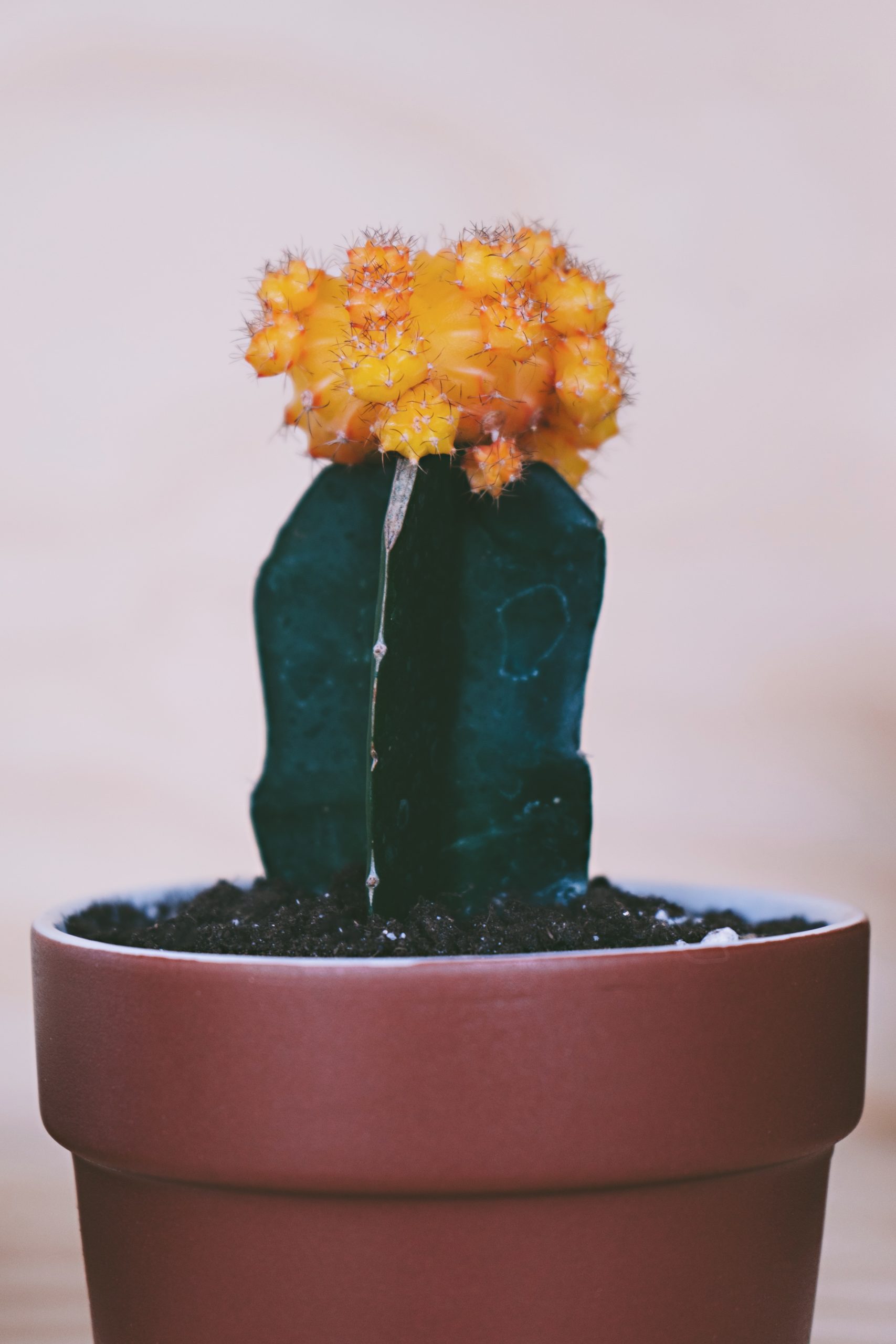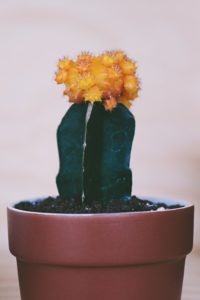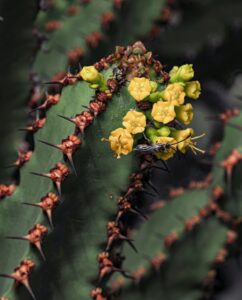Why does the moon cactus lose color? Top 3 things that provoke it

The moon cactus, also scientifically known as Gymnocalycium mihanovichii. Is a succulent, a man-made succulent, a mutant plantlet, that was created by mankind through a combination between Gymnocalycium mihanovichii and the Hylocereus plant, that resulted in a mutant commonly known as the moon cactus.
The moon cactus is made out of two parts, the bottom, the green half of the plant, which is what successfully keeps the top half of the moon cactus alive. The top half is what is unique about this succulent, its vibrant colors. The colors that a moon cactus can come with are red, orange, hot pink and bright, almost neon yellow. However, this top part, which is added unnaturally to the bottom half, can not absorb sunlight, therefore, it can not use the photosynthesis process, and without it, the plant can not survive.
But this is where the bottom half comes in, this part of the plant is capable of absorbing sunlight and therefore, using photosynthesis, keeping the whole plant alive and well. Now that we have a bit of an idea about how the moon cactus works, without further ado, let’s find out why does the moon cactus lose color?
So, why does the moon cactus lose color?
Well, this is a bit more complex than the other subjects that we discussed before. Therefore, I cannot provide a straight answer just yet.
There are a few things that can cause your moon cactus to fade away, but one thing that I can be sure of right now is that it is not good at all, whatever the cause, if your plant got to the point where it is losing its color, the plantlet will be hard to save.
- One first thing that could have caused the moon cactus to turn pale and lose its green, beautiful color, is overwatering or underwatering. If your moon cactus went pale, or grey, the main cause could be overwatering or underwatering. If you have overwatered your succulent, that surely resulted in constant dump soil that created the perfect cold environment to develop mould, affecting the roots of the cactus and therefore, giving it a pale color. The best way to water your moon cactus is by letting the soil to completely dry, you can check with your finger if the soil is dry or not. Besides watering your plant too much, overwatering can happen because of the soil you use. We discussed in another article the mix of soil needed for your moon cactus to survive properly, therefore, make sure to check it out! Without the proper soil mix, the ventilation and drainage system for your cactus will be jeopardized, tragically resulting in overwatering and lastly, mould on the plants’ leaves that looks like white fuzz, making the plant to look like it lost its color. The pot you use can be the cause of the overwatering too. If you do not plant your moon cactus in a pot that has drainage holes, sadly your plant will end up with dump, mouldy and cold soil, and we already know where that gets us. Underwatering however, will result in curled stems and spines alongside a pale color.
- Freezing temperatures, would be the second guess. A possible cause for the white color of the moon cactus is the placement of the plant where temperatures are constantly too low for your succulent. This will cause your moon cactus to turn pale, and lose its spines. If the plantlet is not moved to a warm place, it will eventually die.
- Direct sunlight. We talked about sunlight at the start of the article, and we do know that sunlight is responsible for the plant staying alive through photosynthesis. However, if you keep your moon cactus in direct sunlight for too long, the UV radiation will cause sunburns on the surface of the leaves. As a result of the sunburns, the leaves will start turning crispy, dry and white.
4. A fourth possible cause could be an infestation, to be more exact, moth infestation. If this bug is found around your cactus, then it probably left larvae too. These larvae could be the reason why your moon cactus looks pale. They feed on the plants’ leaves tissue. Make sure to get rid of the moth and apply a moth insecticide, there are special insecticides that are designed specifically to kill both adult moths and larvae. After this, based on the damage provoked by the infestation and the care the plant is given, it might go back to normal.





